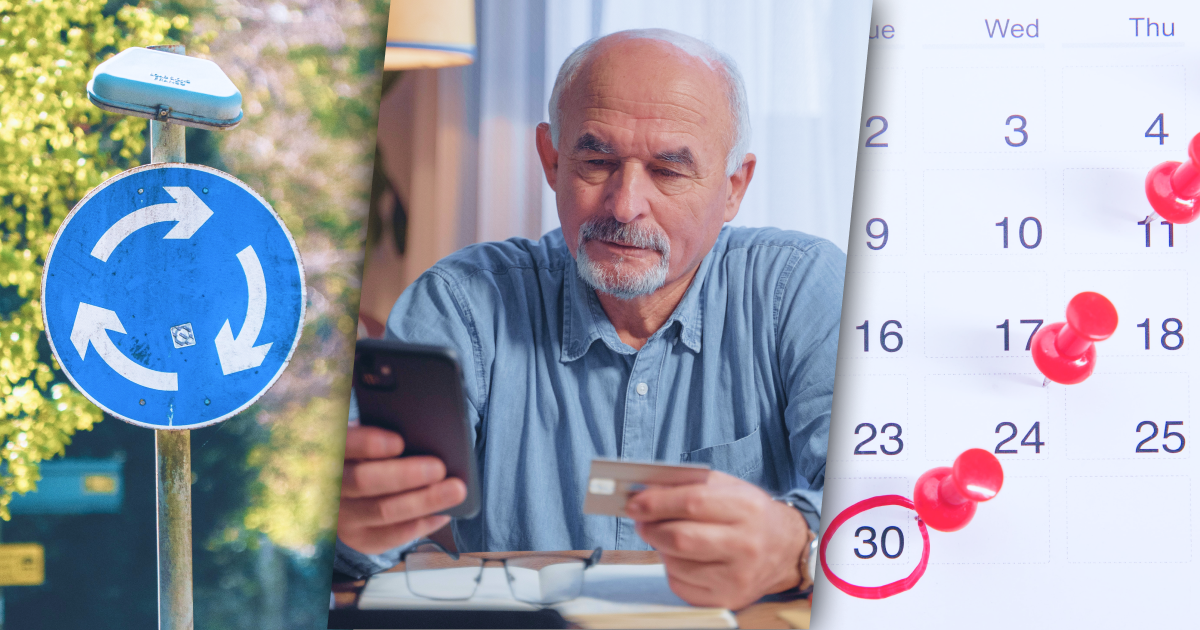When examining which of your donors are most likely to opt in to recurring giving, what do you notice?
Though each nonprofit and charity is different, one trend you may notice is a lack of donors under 30 turning on a recurring giving feature. This may be because they’re embarrassed to opt out later, worried they won’t have sustainable income to give regularly, or need greater motivation to “set it and forget it.”
Even though the average donor in the US is 64, studies show that Millennials and Gen Zers are becoming increasingly philanthropic as they use the Internet to stay informed on global and environmental factors that they’ve inherited. It’s easier than ever to connect online with a charity – and younger generations are inspired by role models around their age who are champions for change.
So how can we get them back to giving regularly for your cause?
It may be helpful to shift your messaging from recurring giving to returning giving: inspire younger donors to give again and again, without asking for them to set a recurring gift.
Even though recurring donors are perhaps the most invested in your organization, that doesn’t mean the casual donor isn’t. For younger generations, returning to donate to the same charity 2 or 3 times in the span of a year feels like a big ask. Because for them, it is!
The difference between recurring and returning
First thing’s first: a recurring donation is any ongoing gift from the same donor that happens automatically. Recurring donations happen at intervals such as weekly, monthly, quarterly, and annually. For example, a donor might choose to automate $10 a month, rather than $100 up front. Most donors also like this option, particularly those that can’t give a lot at once. Recurring donors also often give more over the course of a year than a one-time donor.
Returning donations are similar to recurring donations, with the big difference being the commitment to donating at set intervals. A returning donation is a manual choice a donor must make and is missing the passive “set it and forget it” mentality of recurring donations. They require more effort and outreach to get a donor to come back and give again.
In fact, the Fundraising Effectiveness Project reports that the average donor retention rate is right around 45%. That means most of your donors are not giving a second time. However, if you can get that second donation, your retention rates increase dramatically – it is highly likely they will continue to donate or turn on a “recurring” feature. Because of this, nonprofits who focus on capturing that second donation naturally increase their average donor retention rate.
This shows us that while recurring donations are excellent, it’s especially important to think about returning giving, especially with a more reluctant younger generation.
Let’s dive into our strategies for overcoming donor reluctance by leaning into returning giving messaging.
Start with a genuine thank you
When anyone donates, gratitude is the first priority. First, make sure your thank you’s are genuine. Go beyond a formal template message and show true authenticity in your delight that they’ve donated. Even a simple personal introduction can make a donor think the message was crafted just for them. If you have time, craft a personal message for your follow-up email to show donors just how much it means to your organization.
Additionally, make sure you thank your donors again when the campaign is over. That’s the perfect time to inform your supporters of the specific impacts their effort had on your goal. You can also gently remind them that though the campaign has ended, there’s more to be done, but don’t make an ask the focus of your email – gratitude comes first. A genuine connection can go a long way in bringing a donor back.
Tell a good story
Nonprofit storytelling should be two things: Dynamic and inspirational. Hitting these two aspects of storytelling will help you craft a narrative about your work that makes donors feel like a part of something important.
The core of dynamic storytelling is to show how your organization is ever-changing and evolving. It’s a story of how you are continually working to improve lives.
While it’s great to celebrate successes, you may want to show the aspect of fundraising that may be less talked about – that there’s always more that could have been done.
One of the most impactful ways to keep your story dynamic and inspirational is to showcase the efforts of your community. You can share the stories of staff, volunteers, or community projects that are able to continue due to returning donations. When a donor sees how crucial their contributions are, they may be more likely to give again.
Create Shareable Content
When creating stories to inspire giving, make them digestible and shareable. This means that they’re easy to read, written simply and powerfully, and paired with photos and images. Include a simple call to action and button to donate. If your content is easy to share, the chances are that a one-time donor may come across it and be inspired to give again. Additionally, encourage people to share their own stories with you as well, via email, online form, or on social media, that you can easily reshare on your own feeds. Public acknowledgement of donor efforts can go a long way.
If you’re thinking of what kind of stories make great shareable content, consider:
- Personal impact stories from a successful campaign
- Profiles of your oldest/youngest/super star volunteer
- Photos from events that show your nonprofit in action
- Micro-stories that show giving impact (what does $25, $50, $100 do?)
Create a separate email list for one-time donors
This is where data can become your best friend. Take some time to create a separate email list for donors who’ve given once and were born after, say, 1990. Craft language specific to this group. Don’t lecture them or drone on about the benefits of recurring donations. Remember – the idea is to get them to a low-stakes return to donating.
Simply mention how much their one-time donation meant to your organization and throw in some of your other initiatives for good measure. You can link to social campaigns or fun events you’re planning in the future. Or you can make a call for volunteers and show them how fun it can be to be a part of your mission. Most of all, make the decision to return to donate their idea. Inspire them, not bully them.
Invite them to peer-to-peer campaigns
Peer-to-peer is still simply one of the best ways to engage a community to rally towards a fundraising goal.
The social pressure of peer-to-peer, combined with an ask from a peer appeals directly to younger folks – with 84% of Millennial donors having given to a cause based on a friend’s ask.
Think of the power behind that statistic. Peer-to-peer messaging is perfect for the reluctant millennial donor.
When crafting a peer-to-peer campaign, remember to consider the social aspect of it. Campaigns that are actively engaging with users on social media tend to see more impact.
Think about how you can encourage teams to share a post about the campaign to get your message in front of younger donors. Consider campaigns that require that people tag others — whether on Facebook, Twitter, Instagram or YouTube. Also, as videos are everywhere nowadays, so think of asking donors to film themselves completing a task or partaking in a social challenge or meme.
Available Now
Get the full GiveWP Peer-to-Peer Fundraising Suite today to allow your supporters to raise money for you.

Play games!
When thinking of social pressure, there’s nothing like adding a bit of competition. The best way to do this is by embracing elements of gamification. In a gamified system, users are motivated by the possibility of a reward. Though all ages love games, there’s no denying that younger generations tend to become more involved in gamification elements. Embrace gameplay as a way to win their return donation.
One way to do this is to play games with them online! There are a variety of games you can play online with donors, from trivia to charades, to newer games like Jackbox and Among Us.
Even if the social night does not result in return donations, you are still connecting with users in an authentic way that leaves a lasting impression.
Allow for online profiles and accounts
After a donor gives once, encourage them to set up an online profile on your website for easy tracking. In their online account, allow users to manage online giving methods such as recurring giving, update payment methods, download tax receipts, and get involved in more ways.
Having online donor accounts also allows you to add more gamification features with integrations like Gamipress.
Simply present the option to create a profile as a way to manage donations. Millennials know their way around online profiles well and like managing their finances. They’ll see this as another management tool. Once on their online profile or account page, consider placing easy language or a link where another donation can be made. After all, they’re already there – how easy would it be to click through and give again?
Use an Influencer
As we’ve written about before, Influencers are able to reach a bigger, younger audience. Rather than reaching one person at a time, an influencer is encouraging many of their “friends” on their follower list to support your cause together.
When looking for a potential influencer, find a social champion with content relevant to your cause, and of course someone who has a fairly large following on Instagram. For example, there are tons of environmental advocates on Instagram you could reach out to, if your cause is environmental in any way. Though other niches might have a hard time, there are influencers for nearly everything, so with some searching and outreach, you could find a perfect partner to share your message.
Like What You're Reading? Subscribe Here!
Newsletter Opt-in
Show donor care with online messaging
If there’s two things the younger generation does not want, it’s spam calls and mailers. Those will go largely ignored and will feel like a wasted effort from your organization. Instead, show donor care in the same way they’re already communicating, which is online messaging.
Since 64% of people said that they would prefer to message a business rather than call them, donors expect someone to be available to answer their questions easily.
To cut down on time spent responding, consider having a donor knowledgebase or FAQ page for quick answers you can link to, or even consider implementing a Chatbot to improve response time. On Facebook, employ away messages and Instant Replies to send canned responses until a human can respond.
Meeting donors where they are shows a genuine care and interest in communicating on their terms. Being available via social media or online messaging makes it easy for a younger generation to ask any questions that may help them overcome reluctance to return.
Bring Back Your One-Time Donors to Give Again
With any of these strategies above, you have a chance to bring back a donor who may be super passionate about your cause but unsure if they can continually support you. Show them there is more than one way to get involved and take the pressure off giving.


